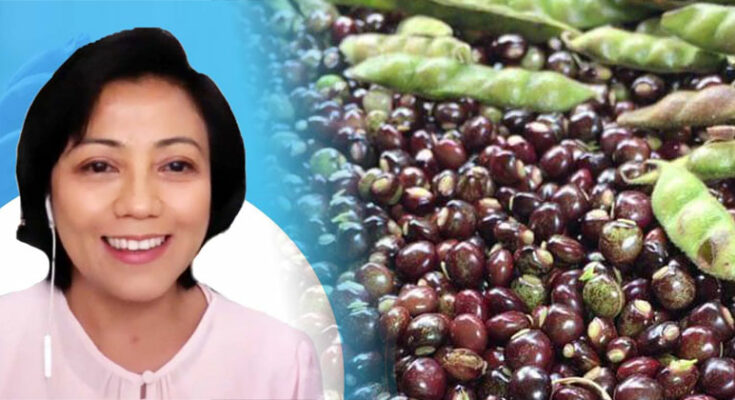What is locally considered a minor crop grown in backyards or on a small amount of farm acreage in Panay Island has a very promising antibacterial activity against different types of skin diseases.
Traditionally, kadios is a popular, functional Ilonggo food that has long been an ingredient in the Ilonggo cuisine known as KBL, a mixture of kadyos, baboy (pork), and langka (jackfruit). Also known as Congo pea or black-eyed pea in English, it flowers after 65-80 days, and following a short period, fresh pods can be harvested.
Aside from producing sumptuous meals, the kadios contain phytochemicals that could exploit to kill whatever diseases we could face, carbohydrates and fiber, proteins, and vitamins.
Dr. Doralyn Dalisay, Department of Science and Technology’s (DOST) Balik Scientist, embarks on the novel study of the development of kadios as skin antibiotic entitled “Chemical and Biological Characterization of Pure and Bioactive Compounds from kadios (Cajanus cajan) Seeds and its Topical Formulation Studies.”
The journey started in 2016 where Dr. Dalisay has a project with her undergraduate students from the University of San Agustin (USA) to screen 20 beans in Panay Island. From the 20 beans investigated, only the kadios gave a very promising anti-bacterial activity.
[Related: Dr. Dalisay named PRC Professional of the Year in 2019]
With the potential of the preliminary investigations and findings, she further studied the activities of kadios and found particular compounds that are indeed responsible for the anti-bacterial activity.
With the seed’s potential, in collaboration with the local pharmaceutical company Maridan, USA, and Department of Science and Technology – Philippine Council for Health Research and Development, the study was pursued to further develop a topical formulation of kadios against skin infections caused by Staphylococcus Aureus.
Based on the 2017 study of Department of Health – Antimicrobial Resistance Surveillance Program, the Staphylococcus Aureus that is a major pathogen causing skin diseases such as boils and cuts, is now resistant to most of the clinically available antibiotics such as Erythromycin with 14 percent resistance have been found, Clindamycin with 13 percent, and the considered as last resort Vancomycin with two percent resistance.
With this, experts and researchers were prompted to focus on fighting the most dangerous pathogens, including the Staphylococcus Aureus. If infected by a multi-drug resistant, the individual will undergo some systemic disease that can cause more damage or more threat to his health.
“If we cannot mitigate this there will be about 10 million people that could die each year by 2050 and this could be one pandemic that we foresee. So we have to be prepared right now in fighting these infectious diseases that are drug-resistant,” stressed Dr. Dalisay.
The study is pushed through with DOH and DOST’s Unified Health Research and Agenda for 2017-2022 under the research theme of Global Competitiveness and Innovation in Health which promotes research as a tool for creating novel solutions to existing and emerging health problems.
[Related: Dr. Dalisay discover antibiotics from marine bacteria.]
Dr. Dalisay particularly targeted the component of Drug Discovery and Development where the study identifies and standardizes natural products and develops drugs and vaccines for specific conditions; and the component of functional food where the research focuses on food supplements and functional food development of kadios.
Currently, in the first year, the study continues to test and isolate natural products present in kadios. Dr. Dalisay stressed that they are not testing for only one panel of pathogen that can cause skin diseases but escalates to several panels of Staphylococcus Aureus. Moreover, it continues to compare the resistance of natural products of kadios to other available skin antibiotics we have in the market.(JJMoleño/DOST VI-KMU)



